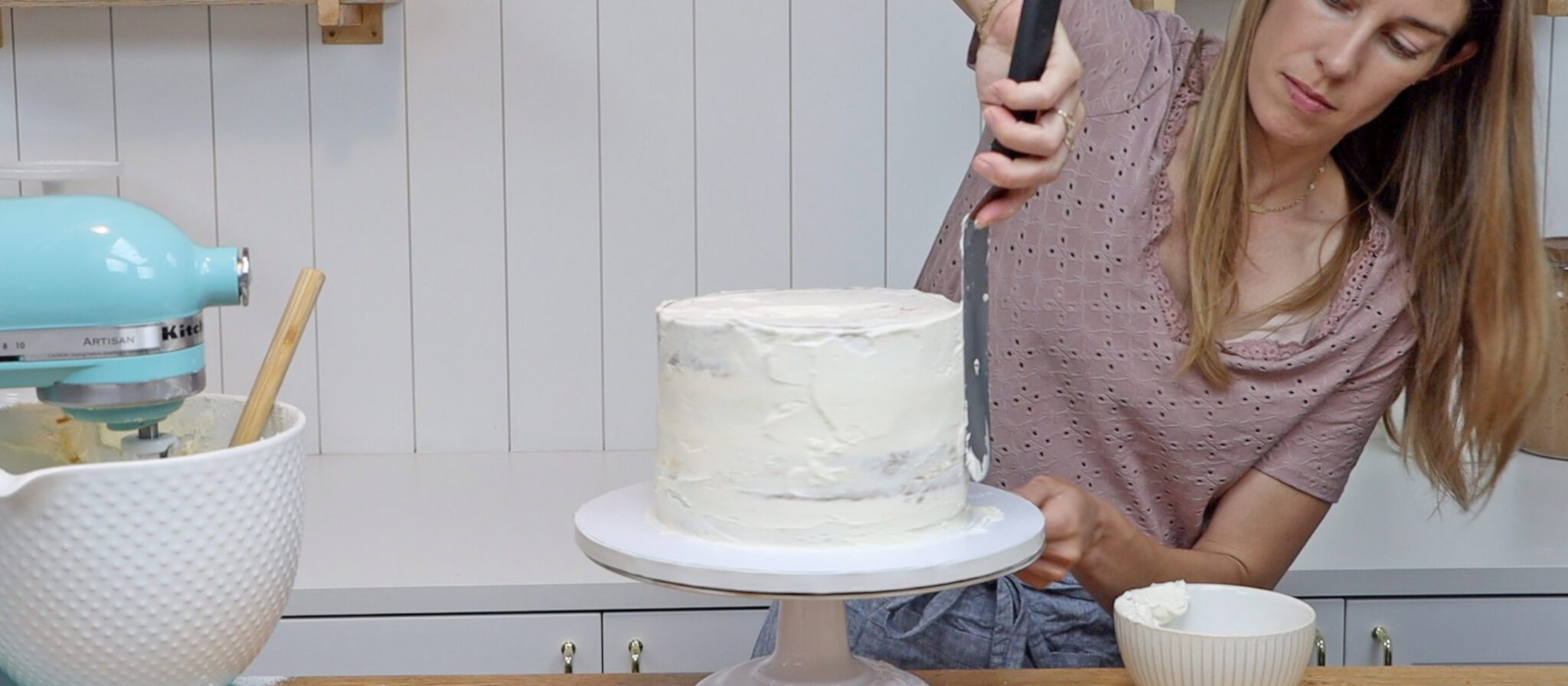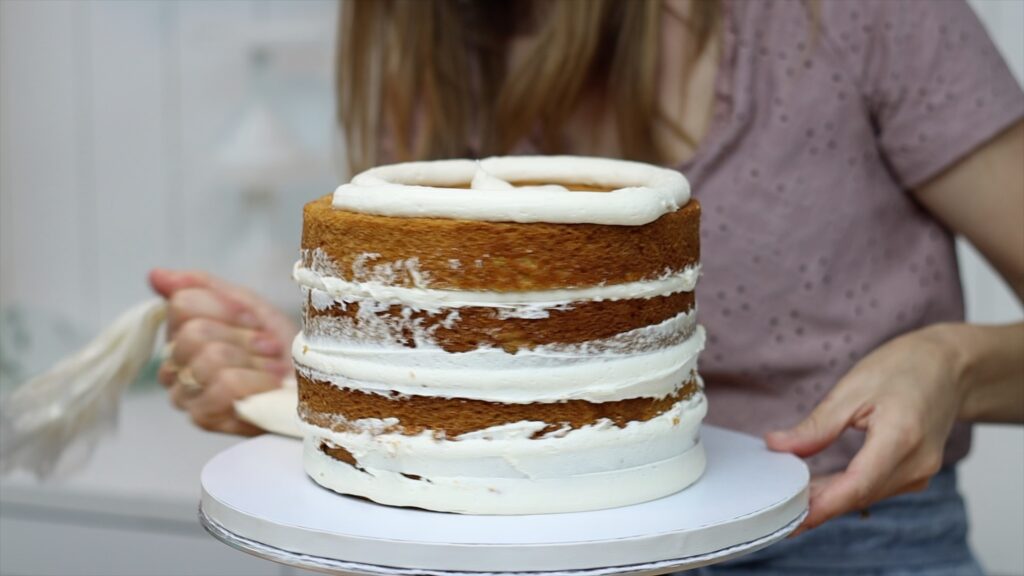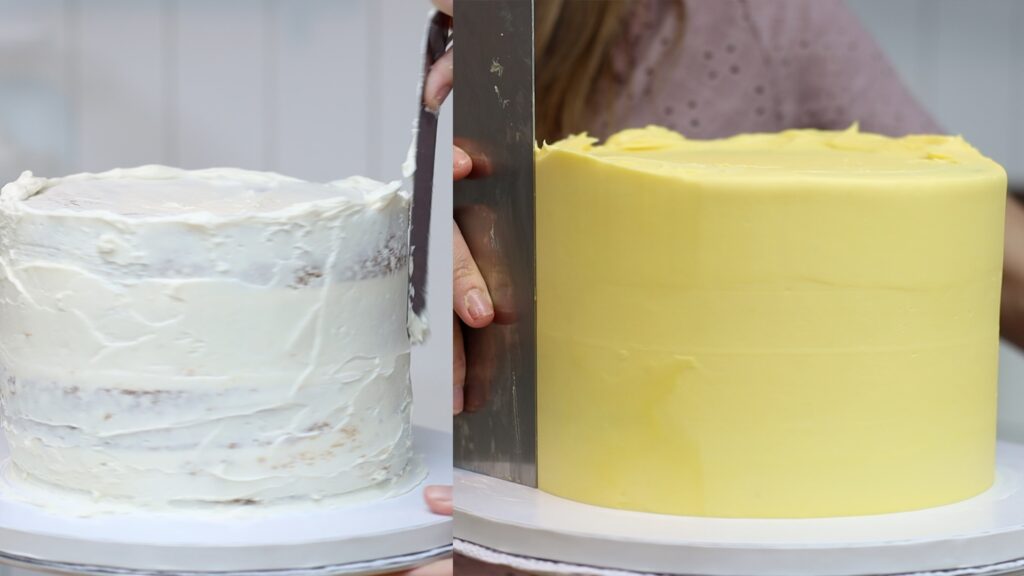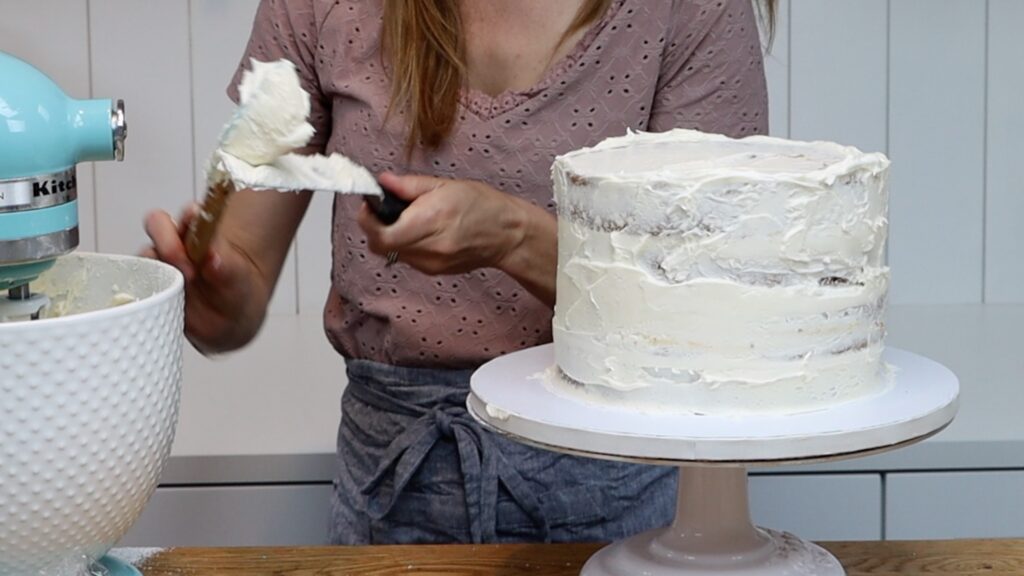
A crumb coat is an essential step before a final layer of frosting. In this tutorial I'll show you why and how to crumb coat a cake from start to finish!
A crumb coat is a very thin layer of frosting that covers the cake and seals in the moisture. Also, very importantly, it traps all of the crumbs. As you spread your frosting on the cake, any crumbs that come off will get stuck in this crumb coat of frosting. After setting this crumb coat, the crumbs won't get into the final layer of frosting. This means there will be no visible crumbs on your frosted cake.
To go back a step and start at the very beginning, check out this tutorial on how to assemble a layer cake.
A very, very important step before crumb creating your cake is to chill it. 30 minutes in the fridge will make the cake firmer, which means the layers won't slip as you frost them.
Let's look at what happens if you don't chill the cake after assembling but before frosting it. The pressure as you frost it can push the upper layers sideways, causing the cake to lean. This is definitely not a good look!

This happens because the filling is still soft and slippery so spreading pushes the cake layers away from your spatula.
To avoid this, put the cake in the fridge for 30 minutes to set the filling before you frost it. Then spread or pipe your frosting on. It's quicker to pipe the frosting rather than scooping it from a bowl and spreading it on but both work.
I like to start with the top of the cake before doing the sides. If I'm piping it, I'll also pipe around the very bottom of the cake since that's the trickiest part to reach.

On the top of the cake spread the frosting all the way over the edges of the cake to completely cover it. Then hold your offset spatula at a 45° angle as you spin the cake and that will flatten the top.

Then spread frosting from side to side all the way around the cake. I'm using my 4 Minute Buttercream for this cake. It's delicious as a filling or frosting (or both!) and it's easy to get really smooth as frosting. It's also stable enough for piping and other decorations on your cakes.

This crumb coat doesn't have to be neat because it'll be covered up by another layer of frosting next. The purpose of the crumb coat is to trap any crumbs that come off the cake so spread it over the entire cake. You don't want any naked cake exposed. Notice that this cake doesn't have the neatest shape to begin with but the crumb coat and final coat of frosting will fill in any imperfections. By the end, the shape of the cake looks perfect!

To scoop up more frosting from the mixing bowl, use a clean spatula to transfer it to your

Although it's not necessary to get this frosting perfectly smooth, you don't want any bulges of frosting to stick out. Those will get in the way when you spread and smooth the final layer of frosting.

For the top edge of the cake, push sideways with your

I should mention that this crumb coat can be white or the same colour as your final coat of frosting. If your final coat colour is dark like red or black, a white crumb coat will act as a barrier to prevent that dark colour from staining your cake underneath.
A crumb coat is an important step to prevent any crumbs getting into your final layer of frosting. In the next part of this tutorial I'll share how to do the final layer of frosting, where you take your time to make it smooth and neat. That part will be coming next week!
I hope this has been useful! Ask me any questions in the comments and visit my cake school to learn hundreds of cake decorating techniques and designs to take your cakes from beginner to professional.
Watch my video on how to crumb coat a cake here:
